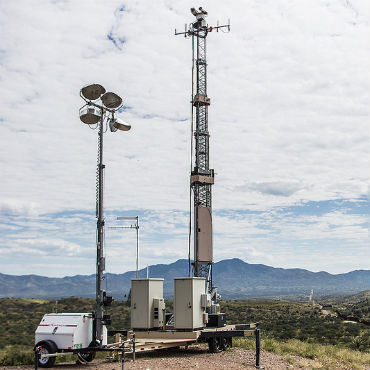Lawmaker: Staffing expenses threaten CBP tech acquisition

Commissioner Gil Kerlikowske assured appropriators that his agency is moving ahead with cost-efficient programs to monitor borders and ports of entry.

CBP recently signed a conract for the construction of integrated fixed towers, which would complement the mobile sensor system shown here, which is along the border near Nogales, Ariz. (Photo: CBP)
A senior Democratic appropriator speculated that what he termed a "relatively modest overall increase" in Customs and Border Protection's fiscal 2015 budget -- coupled with increasing demands from a growing staff -- threatens the agency's ability to acquire new technology.
In an April 2 hearing on CBP's proposed 2015 budget, Rep. David Price (D-N.C.), ranking member of the House Appropriations Homeland Security Subcommittee, suggested the 5.2 percent boost might not be enough in light of higher payroll expenses and the planned hiring of 2,000 CBP port and border security officers. CBP’s overall budget request is $13.1 billion.
Price said CBP's payroll would rise by $300 million in the coming year driven by higher health care and retirement expenses, as well as costs tied to hiring a more experienced workforce.
"In fact, personnel salaries and benefits now make up nearly 72 percent of your budget, compared to only 56 percent just six years ago," he told newly installed CBP Commissioner Gil Kerlikowske. "If this trend continues, it will increasingly limit CBP’s ability to innovate, acquire new technology and maintain current technology, or do anything else except pay for its personnel."
But Kerlikowske assured the panel that his agency was moving ahead with cost-efficient technological programs to monitor U.S. borders and ports of entry.
Under a new program announced March 31, CBP said it can enter into less-expensive partnerships with private sector entities that will help it support services like customs, agricultural processing, border security, and immigration inspection-related matters at ports of entry. CBP had been authorized to participate in five trials in 2013 in Houston, Dallas, El Paso, South Texas and Miami. It began accepting applications for additional partnerships for the coming months on April 1.
Kerlikowske told the subcommittee that CBP is moving ahead with new technologies, especially those that affect border protection and surveillance and cargo handling, but on a more cost-conscious basis. He pointed to the agency's recently-awarded $145 million contract with Elbit Systems of America for integrated fixed towers to watch the Arizona border. He explained that the systems employ technology already in use in Israel, making it far more cost-effective than developing entirely new systems, like those attempted for the failed SBInet project. CBP is also continuing its program to redeploy airborne surveillance platforms, called aerostats -- originally developed and deployed by U.S. armed forces in Afghanistan -- along the U.S.-Mexico border.
Additionally, he said CBP is "exploring" the use of collar lapel-mounted video cameras for its officers on both the northern and southern borders to help protect them in the line of duty. Kerlikowske said in his work in law enforcement, which includes stints as Seattle police chief and as President Barack Obama's Director of the Office of National Drug Control Policy, he had seen the cameras be an effective, efficient way to protect both citizens and officers. The camera systems, however, have some issues for CBP, he said, including the harsh climates where officers work. Privacy concerns and data storage for the video collected are also something that would have to be worked out before the technology is deployed, he said.
NEXT STORY: Wi-Fi Is About to Get Faster


